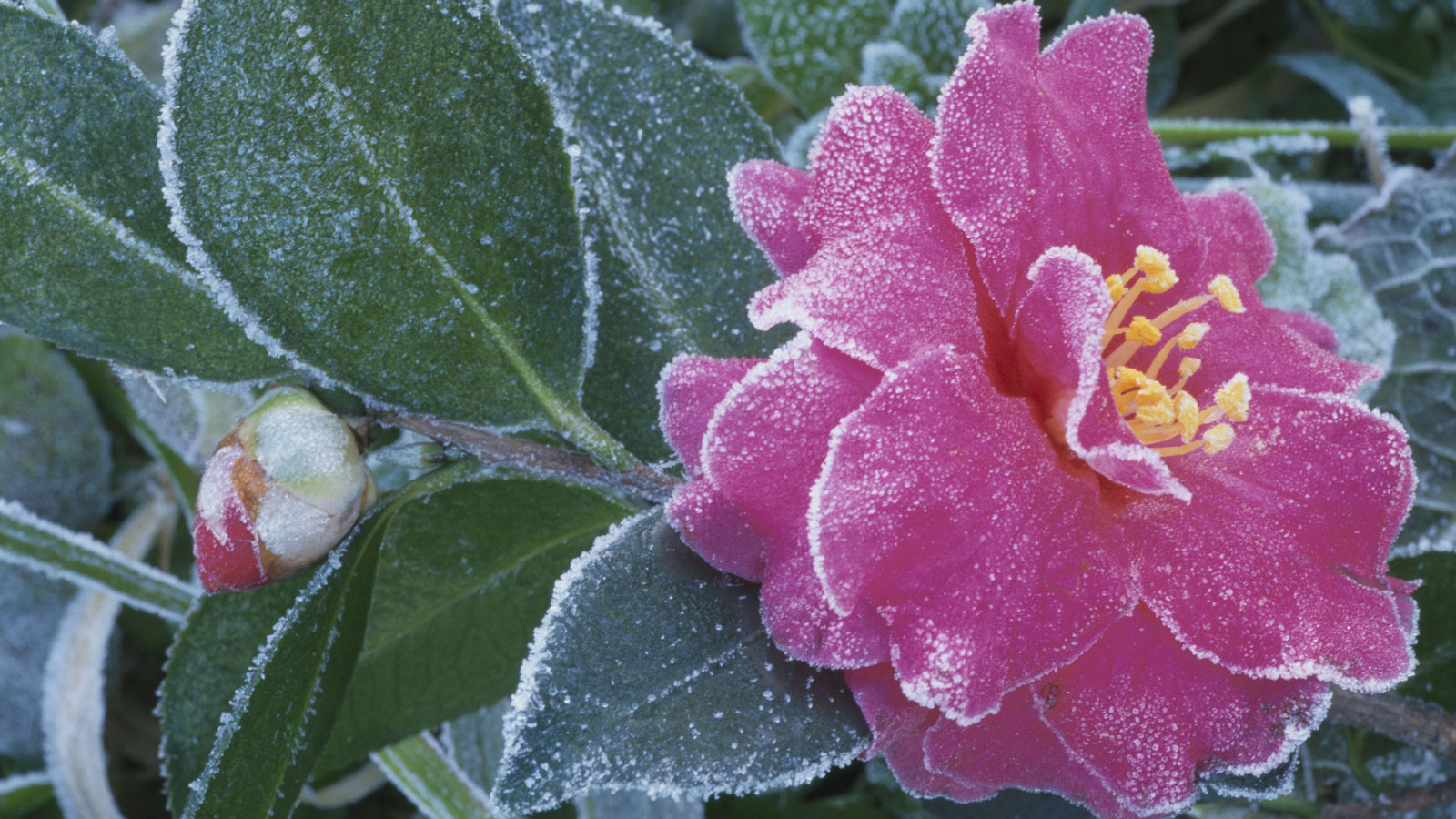
Winter flowers are few and far between but somehow all the more special because of their rarity. Seen against a backdrop of cool evergreens, lightly frosted ornamental grasses or stark sculptural twigs they shine so brightly. Many are also crisply scented, adding an extra dimension to enjoy in the still winter air.
As well as the early flowering bulbs like narcissus and crocus, and the stalwarts such as ever-reliable pansies, cyclamen and hellebores, there are the showy long-flowering blooms of some of our favorite shrubs to enjoy too.
I love winter and in particular the perfect blooms of shrubs like camellias, daphne and winter-flowering clematis that catch the eye in a modern garden when there isn't so much competition around. These really are the stars of the season. Let's give gracefully dried hydrangea blooms with a light dusting of frost an honorary mention too.
Now find out how to make your backyard look blooming in winter with these easy seasonal favorites that will add bold touches of beauty to your winter plantscape.
1. Daphne
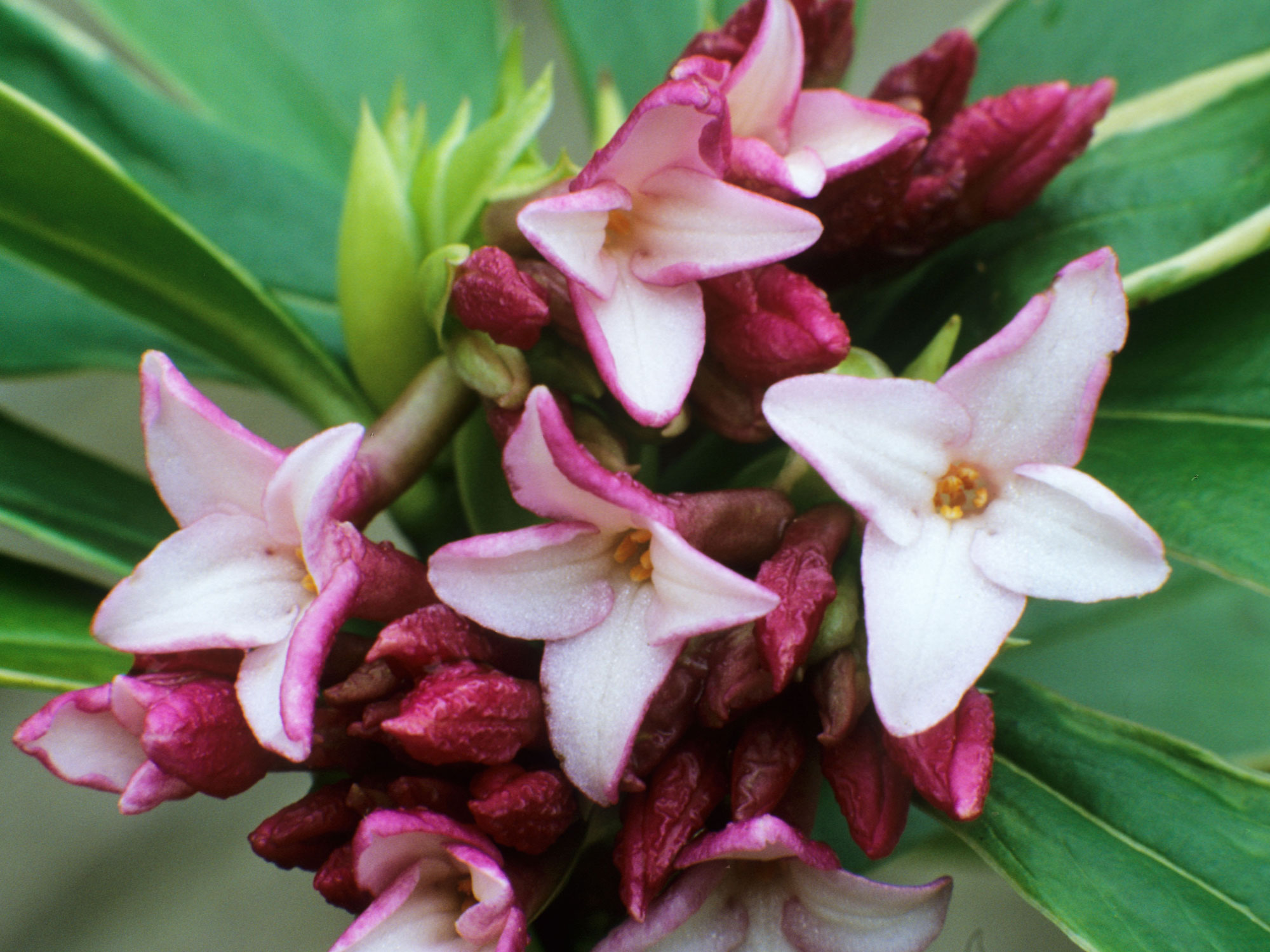
I bought a small daphne plant when I moved into my house a while back and it gets better every year, planted in my partially shady front yard near the door where it drenches the air with scent in winter. So as you can guess I'm a big fan of these low-maintenance beauties.
There is so much to like about daphnes if you're looking for ideas to make your backyard look blooming in winter. It's hard to know where to start. The big story is the large clusters of wonderfully scented flowers. If you plant them near paths and entrances you can enjoy their intensely fragrant blooms, usually produced in winter and early spring, every time you pass by. Another big plus is that daphnes are evergreen so offer year-round foliage interest.
One of the best-known and most popular varieties that is good to start with if you're new to the genre is Daphne odora Aureomarginata, which really packs a punch in terms of color and scent.
If you're limited on space daphnes are a great choice as they're ideal for small gardens as most of the cultivars are compact. They like a sunny, sheltered position and slightly acidic soil. Not all daphnes are winter flowering, with some flowering in spring and summer.
2. Viburnum x bodnantense 'Dawn'
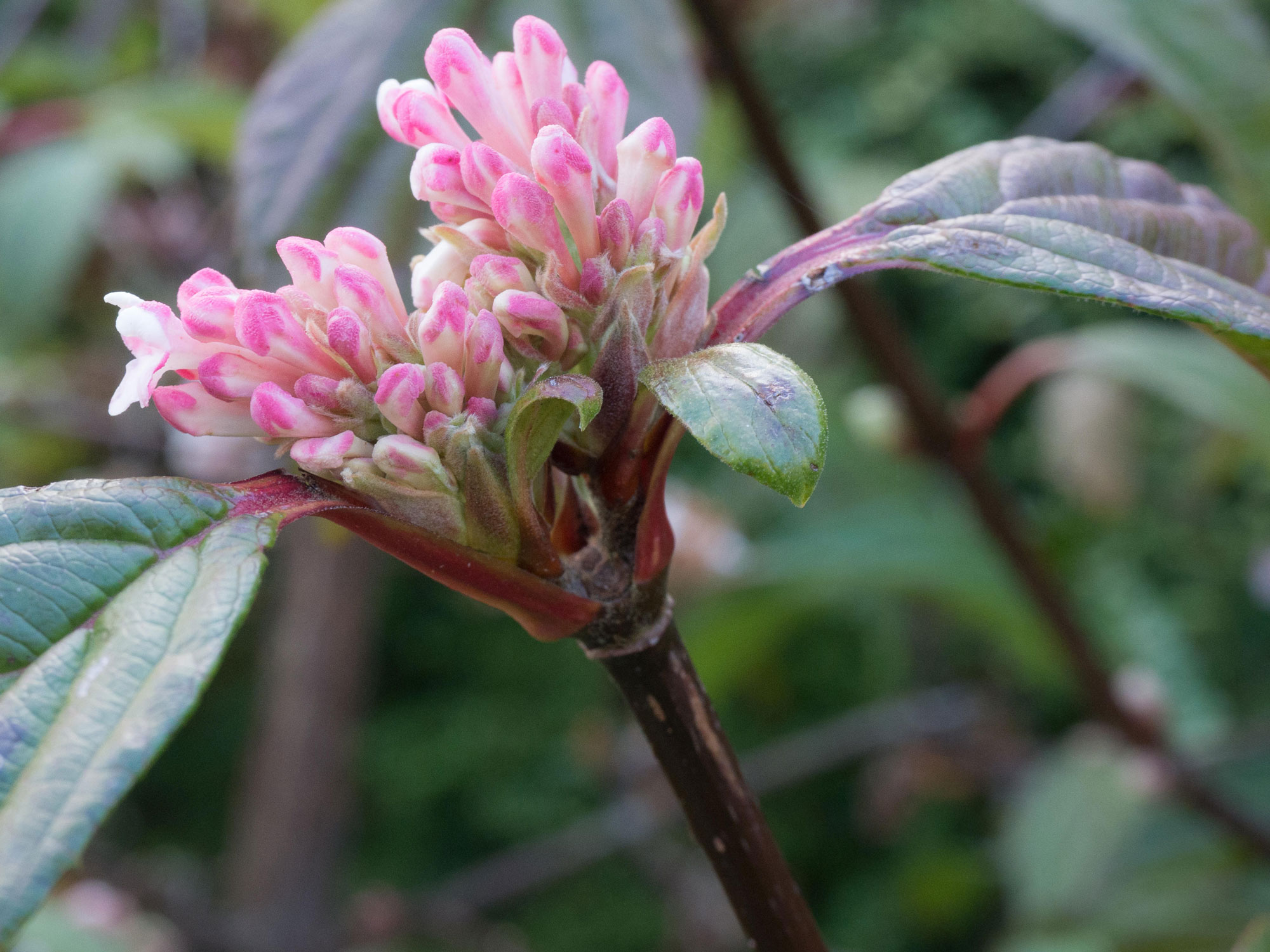
This lovely variety of viburnum is top of the list to make your backyard look blooming in winter. It's a must-have plant because of its extremely fragrant, tubular, dark-pink flowers in winter and spring, from November right through to March. They last for longer than other winter flowers, and will brighten up the darkest of winter days.
Plant this variety in an area where the flowers can be seen and the fragrance enjoyed, such as along a walkway or near an entrance. It will thrive in well-drained soils in full sun to part shade. Plant it in a protected location to help prevent loss of spring flowers if hard freezes are a thing in your area.
'In cold winter climates, flowers bloom on naked stems from late winter to early spring. In warm winter areas (including the deep South and Pacific Northwest coast), flowers bloom on naked stems from late autumn to early spring,' according to the experts at the Missouri Botanical Garden.
3. Camellia

My gorgeous camellia is a thing of beauty and one of the highlights of winter is it breaking into bloom. The fat buds show pink for a while to build the suspense before finally bursting open to form extravagant flowers that look stunning against the backdrop of their glossy evergreen foliage.
I suggest that if you want your backyard to look blooming in winter make camellias your go-to for flower beds. I'm a big fan of the pink ones such as 'Donation', 'Scentsation' and 'Drama Girl', but they also come in red or white, and you can get varieties with simpler anemone-style flowers too that are just as pretty as the full-on double blooms. Another big plus is that winter-flowering camellias bloom for weeks, generally from January to March.
One cultivar I particularly like for growing as a specimen plant in a container is the gorgeous Camellia japonica 'Debbie'. This glossy-leaved evergreen shrub has large rose-pink peony style blooms and flowers reliably through the early months of the year. It's one of the most cold hardy varieties and tolerates low light intensity too, thriving in partial shade.
4. Witch hazel
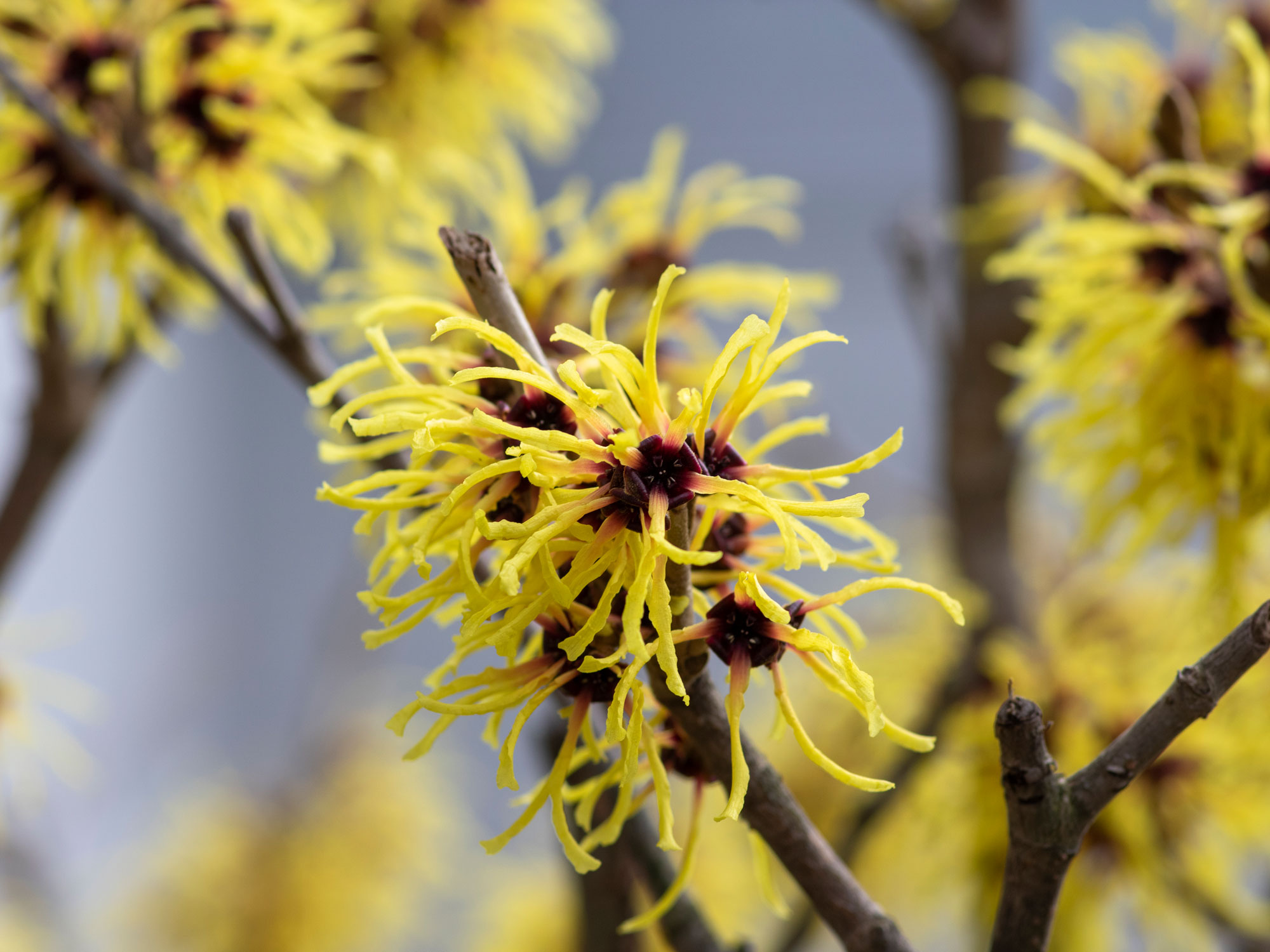
Much as I love pink sometimes celebrating sunny and uplifting yellow is a good thing in winter. Although it's not such a popular color choice it really adds value in the winter garden.
'My favorite winter blooming shrub is witch hazel,' says ISA-certified arborist Ryan Mange from Monster Tree Service. 'There are varieties that are yellow, orange, red and purple. They provide a burst of color in what can otherwise be a dull landscape.'
When planted in the correct place, this low-maintenance garden shrub can benefit the aesthetic appeal all year round, but will really shine in winter. A native shrub, choose one of these and you'll be rewarded with masses of pretty yellow spidery blooms highlighted against stark sculptural winter branches. Sometimes the yellow flowers are tinged with orange or red too.
Witch hazel is one of the few shrubs that blossom in winter and early spring, when there's often very little color elsewhere in the garden. Many varieties also offer a sweet scent, as well as foliage that turns fiery shade in fall. Witch hazels are also exceptionally winter hardy and are generally tolerant of a range of different conditions, which makes them easy to care for.
5. Winter-flowering clematis
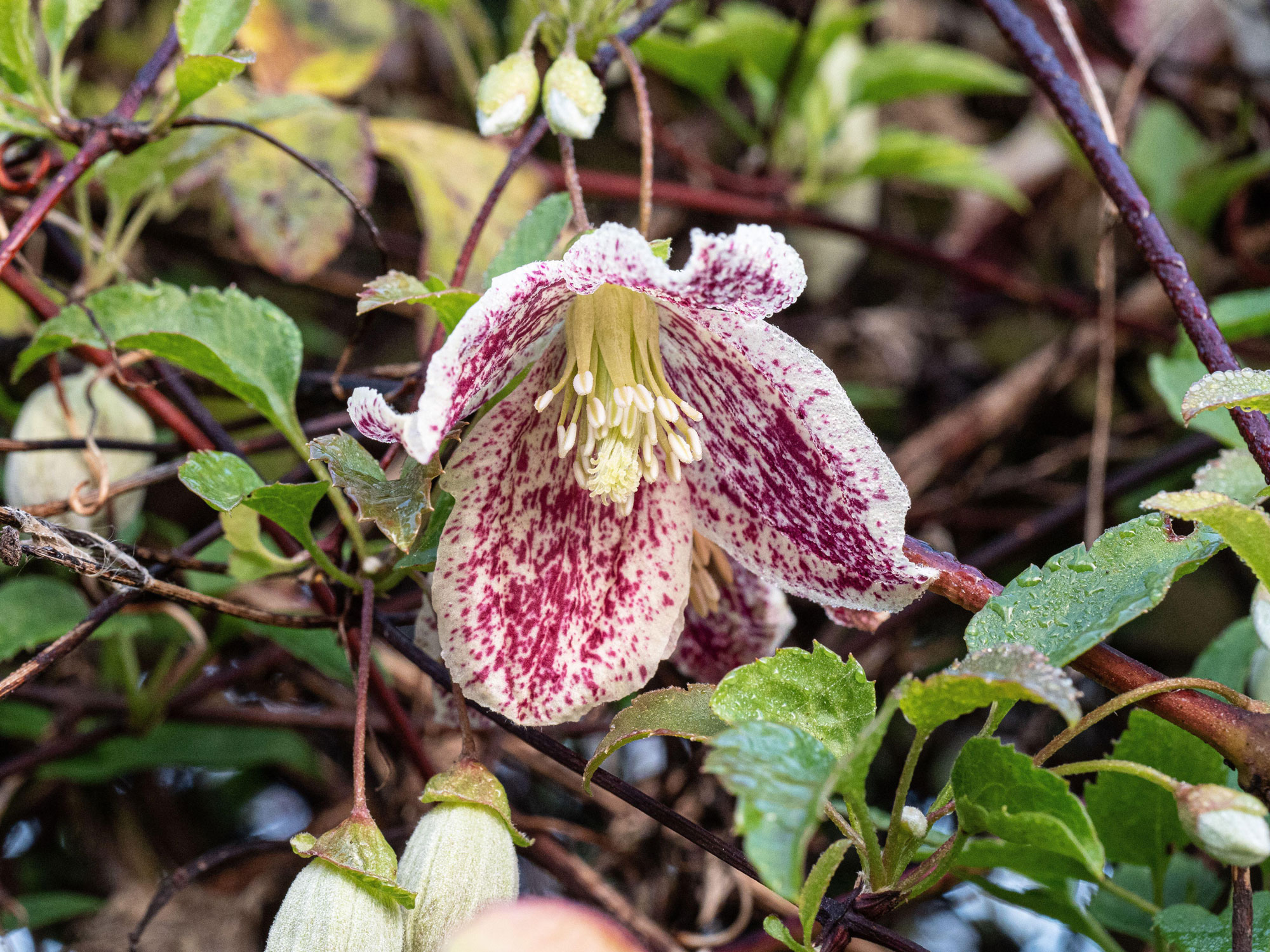
There’s something special about the delicate blooms of winter clematis. Flowers that bloom when the days are so short really lift the spirits. And none more so than these little beauties. Sweetly scented clematis cirrhosa flowers appear from late fall through to early spring.
Hardy and easy to grow, allow them to scramble around a doorway or climb over supports so you can better appreciate the delicate beauty of their flowers close up. The charming evergreen climber Clematis cirrhosa 'Balearica' has one of the best blooms, with fragrant creamy white bell-shaped flowers splashed and etched with pretty maroon freckles.
While most clematis prefer moist, cool conditions around their roots, the cirrhosa varieties favor drier soils, especially in winter. They need a sheltered spot with plenty of winter sunshine. For best results, add lots of grit to the planting hole to help with drainage, and plant against a south- or west-facing wall for added protection.
If you're looking for a climber to disguise an ugly boundary make winter-flowering clematis your go-to and it's guaranteed to make your backyard look blooming in winter.







